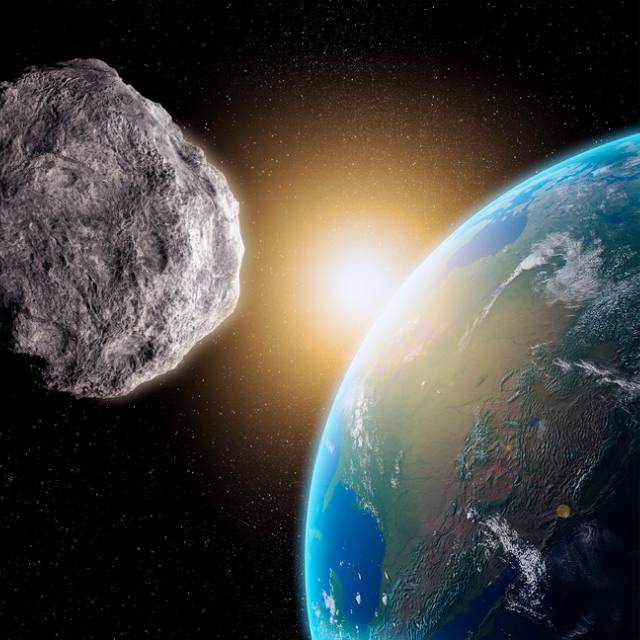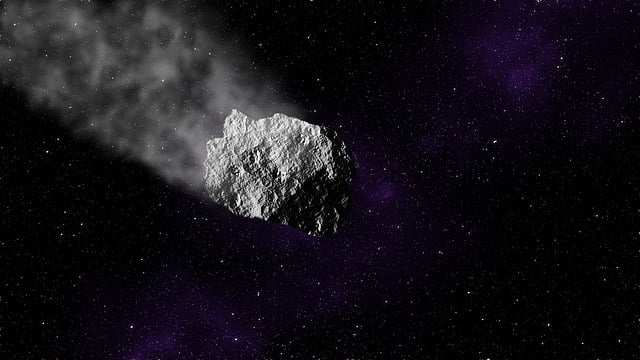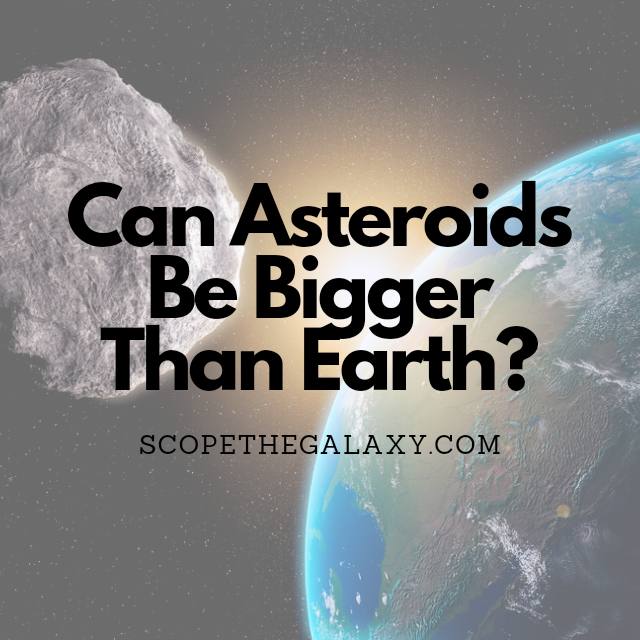*This post may contain affiliate links. This means we may make a commission if you purchase an item using one of our links*
Asteroids cannot be larger than Earth for several reasons. If an asteroid were the size of Earth, it would no longer be an asteroid. This is because an object with the diameter of Earth would possess the required size to achieve hydrostatic equilibrium and, therefore, would be classified as a planet or dwarf planet.
Continue reading to discover the key differences between these classifications and why an asteroid can never be more than 600 km across.
Why Are There No Asteroids Larger Than Earth?
Table of Contents

An asteroid is a small rocky body that orbits the Sun. It is made up of materials left over from the formation of our Solar System about 4.6 billion years ago. Asteroids are typically found in the asteroid belt, which lies between the orbits of Mars and Jupiter.
They range in size from a few meters to hundreds of kilometers across and can contain various minerals, metals, and ice. Asteroids are important because they provide us with valuable insights into our solar system’s history and may even hold clues to the origin of life on Earth.
The size of asteroids is significantly smaller than planets due to different physical and chemical processes that have taken place throughout the history of our solar system. Asteroids are made up of materials that could not form into planets, such as dust, gas, and rocks.
In contrast, a planet is defined by three main characteristics:
- A celestial body that orbits a central star (the Sun)
- The mass of the object is sufficient enough for it to assume hydrostatic equilibrium (which means that planets are roughly spherical)
- It possesses sufficient mass to clear any debris and other material from its orbital path
Asteroids already meet the criteria for number one. If they were the same size as the Earth, they could also meet the requirements for numbers two and three.
Put simply, asteroids are smaller than Earth because if they were the same size (or larger), they would be planets.
How Big Are The Largest Asteroids?

Our solar system is full of millions of asteroids ranging in size from tiny pebbles to objects hundreds of kilometers across. They are mostly located in the asteroid belt between Mars and Jupiter, an important part of our Solar System as it helps us understand how our planets formed and evolved.
Some asteroids have a diameter of around 500 km; the largest recorded in the Milky Way is “Vesta,” which has a diameter of 540 km. In comparison, the diameter of Earth is 12,742 km – even our smallest planet, Mercury, has a diameter of almost 5,000 km.
Asteroids are basically small planets, which is why they’re sometimes referred to as planetoids.
Once an object composed of rock or ice reaches a diameter of 400 – 600 km, it will achieve hydrostatic equilibrium. This equilibrium balances gravity (which is trying to compress the object) against pressure (which is trying to blow the object apart).
And when an object reaches the point of hydrostatic equilibrium, it is no longer classed as an asteroid. Not every object that achieves this status becomes a planet, but for the smaller bodies (like Pluto), this characteristic allows a classification as a dwarf planet.
Dwarf planets are categorized as such because they lack the necessary mass to attract passing debris and clear their orbital path. Still, the reason why we differentiate between dwarf planets and asteroids is that asteroids are too numerous to catalog.
The main difference between a dwarf planet and an asteroid is its ability to achieve hydrostatic equilibrium (and therefore possess a roughly spherical shape) – and this differentiation helps us to classify various objects in space.
Can A Larger Asteroid Have A Core Like Earth?
Most asteroids do not have cores. Asteroids and planets differ significantly in their structure and makeup. In contrast to planets, asteroids have a rather simplistic internal structure, which generally falls within one of three groups.
Asteroids made up of debris bound together by gravity are referred to as “rubble piles.” Tiny fragments tend to collect around larger celestial objects in our Solar System, so this type of asteroid commonly originates from a collision. Composition materials include anything from grains of sand to lumps of metal or rock.
Secondly, “solid asteroids” are the most numerous discovered; The fact that they are now a continuous solid lump shows that they must have been in a liquid state at some point. (compared to the grainy texture of rubble piles)
Meanwhile, “double structure” asteroids are becoming increasingly common and describe two asteroids that are bound extremely close, often touching. These asteroids have been pulled together by gravitational force and now revolve around the Sun in a single orbit.
Only a few asteroids are big enough to be divided into distinct layers. These include Vesta and Ceres, which may have a metallic core at their centers.
Summary
Part of what defines an asteroid as an asteroid is its size. So, if you were to grow an asteroid to the size of a planet, you would completely change its key characteristics and, therefore, its status as an asteroid. Asteroids must remain below 600 km in diameter to maintain the weird and irregular shapes that characterize them.
References
Differences between planets and asteroids | SPACE (spaceobs.com)
Difference between Asteroids and Planets | Asteroids vs. Planets
solar system – Does any asteroid we have ever seen have a hot core like Earth.? – Astronomy Stack Exchange
Do asteroids have metallic cores, like planets? | (spaceanswers.com


